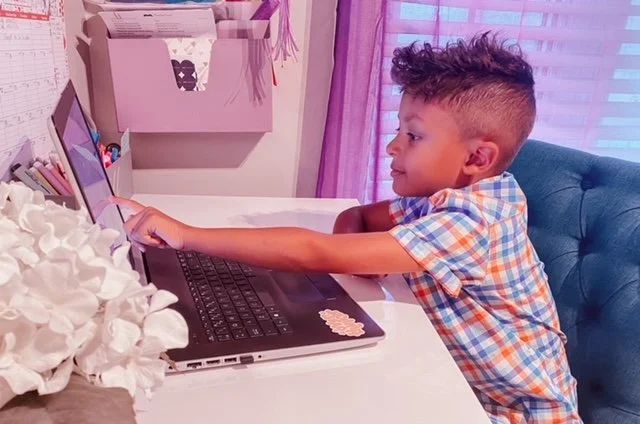Frequently Asked Questions

Have a question regarding the program?
These are the answers to some of the most common questions that we get asked. If you are unable to find an answer to your question here (or on the Program page) — be sure to reach out through one of the methods outlined on the Contact page.
-
I teach from a strengths-based approach that was cemented in my years spent working as a social worker. It is more than simply focusing on a student's strengths and abilities, though that is part of it.
It is empowering the student to become an active participant in their learning. Language I use is positive and uplifting. A simple shift in words we use often helps shift a student's mindset from seeing only problems or what they've not yet had success in (such as literacy) - to finding solutions.
I want them to be aware of their potential for growth and improvement. We will focus on what they can achieve and help them on their way to getting there. I want this learning experience to be positive and meaningful for your child. -
One to one teacher to student ratio gives your child focused and specialized instruction. Our time is solely spent with your child during their session, with no interruptions, as is inevitable in a classroom setting.
-
Yes! Students diagnosed with Dyslexia benefit from a structured literacy program. Students who do not have a diagnosis, but who are struggling with reading also greatly benefit from Orton-Gillingham based programming.
-
Yes. The assessments that we administer are solely to inform the instruction your child will receive. We want to understand where they are starting and will continue to do on-going in session assessments, throughout the program. The goal of this is to ascertain mastery of the skills they are learning.
-
Decoding in reading is the ability to identify and match letters, or letter combinations (graphemes) to their sounds (phonemes). Decoding is the ability to recognize patterns in words. We will teach your child the required strategies to break multisyllabic words down into easier, more manageable syllables.
-
Sessions are 45 minutes long. We are often able to complete more work virtually than in-person because of the nature of having things such as letter tiles prepped ahead of time, versus spending time in session having to rearrange and physically switch out supplies.
-
Virtual sessions give you flexibility to make your child's session happen during the school day! There is no need for you to leave your work or adjust your (often busy) after school schedule. Your child can complete their 45 minute session, while they're at school.
Many schools have co-operated with finding student's a quiet location for them to complete their session (headphones are helpful!). Students benefit greatly from the intensive one on one instruction and finding 45 minutes in the school day where they are less likely to miss out on other important assignments is doable. We can work as a team! -
Many students do well (or even better!) completing their sessions without in-person adult supervision. This will be determined on a case by case basis.
-
Your child will need a laptop, a Chromebook or a newer generation iPad that allows for remote control access to be given.
Your child will benefit from having headphones available to use during sessions.
Other supplies that are helpful to have on hand include, but are not limited to:
a whiteboard
dry erase markers
pencil
paper
eraser
physical pop-its (if they have one!)
play-doh
-
Experience has shown that for many students virtual sessions can work even better! Not only for familial scheduling reasons, but given the use of letter tiles - virtual time decreases time spent in between activities in session.
